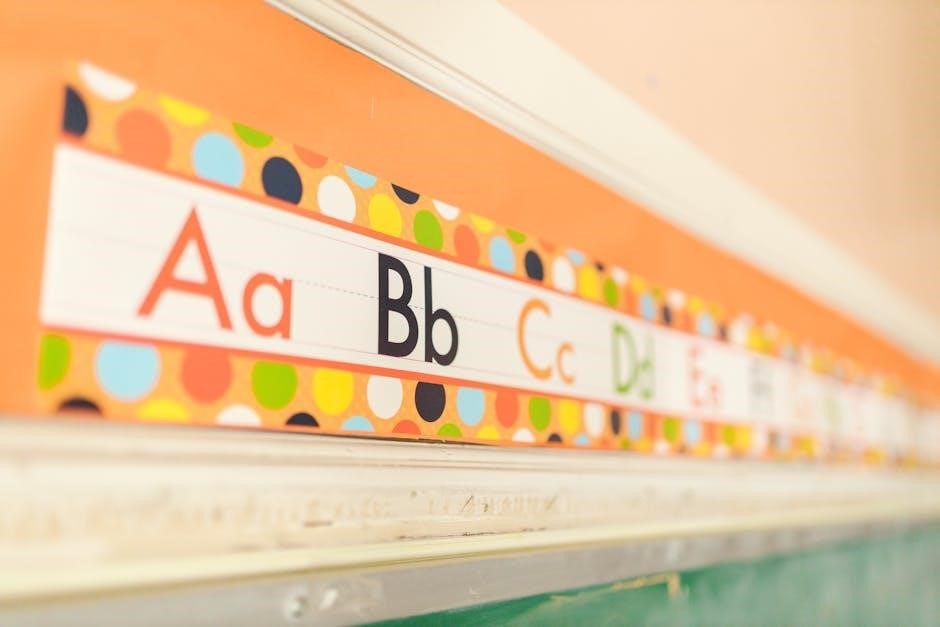The guide to safe scouting chart is a valuable resource for leaders, providing essential safety protocols and procedures in a clear and concise manner using tables and charts effectively always.
Overview of the Guide to Safe Scouting
The guide to safe scouting is a comprehensive document that outlines the policies and procedures for ensuring safety in all scouting activities. It applies to all BSA activities, including those conducted by Cub Scouts, Boy Scouts, and Venturing crews. The guide provides detailed information on topics such as supervision, assessment, and risk management. It also includes guidelines for age-appropriate scouting activities and resources for scout leaders and parents. The guide is regularly updated to reflect changes in safety protocols and procedures, and it is available online for easy access. By following the guide to safe scouting, leaders can help ensure that all scouting activities are conducted safely and effectively, and that all participants have a positive and enjoyable experience. The guide is an essential resource for anyone involved in scouting, and it is an important part of the BSA’s commitment to safety.

Understanding the Four Points of SAFE
Leaders use the four points of SAFE to ensure supervision and assessment in scouting activities always effectively using protocols.
Supervision and Assessment in Scouting Activities
The supervision and assessment of scouting activities are crucial components of the guide to safe scouting chart, as they help ensure the well-being and safety of all participants.
Leaders and organizers must carefully plan and supervise activities to prevent accidents and injuries, and to provide a safe and supportive environment for scouts to learn and grow.
Assessment is also an essential part of the process, as it helps leaders to identify potential risks and hazards, and to take steps to mitigate them.
By following the guide to safe scouting chart and taking a proactive approach to supervision and assessment, leaders can help to create a safe and enjoyable experience for all scouts, and to promote a culture of safety and responsibility within the organization.
This approach is essential for building trust and confidence among scouts, parents, and leaders, and for ensuring that scouting activities are conducted in a safe and responsible manner.

Age Appropriate Scouting Guidelines
Scouting guidelines vary by age group, ensuring activities are suitable for each stage of development and maturity always using tables and charts effectively online.
Resources for Scout Leaders and Parents
Scout leaders and parents have access to various resources to ensure safe scouting practices, including online guides, training programs, and safety protocols. The Boy Scouts of America website provides a wealth of information on safety procedures, emergency preparedness, and risk management. Additionally, local councils and districts offer training and support for leaders and parents. These resources help to educate and inform leaders and parents on how to create a safe and healthy environment for scouts. By utilizing these resources, scout leaders and parents can help to prevent accidents and ensure a positive experience for all participants.

Tool Use and Safety in Scouting
Proper tool use and safety protocols are essential for scouting activities always ensuring safety first with guidance.
Protocols for Adult Leaders and Volunteers
Adult leaders and volunteers play a crucial role in ensuring the safety of scouts during activities, and it is essential that they follow established protocols to minimize risks and prevent accidents. The guide to safe scouting chart provides a framework for adult leaders and volunteers to follow, outlining minimum guiding protocols for scouting service projects that include the use of tools. These protocols are designed to protect not only the scouts but also the adult leaders and volunteers themselves. By following these protocols, adult leaders and volunteers can help create a safe and supportive environment for scouts to learn and grow. The protocols outlined in the guide to safe scouting chart are based on best practices and are regularly updated to reflect new information and guidelines. Adult leaders and volunteers are expected to familiarize themselves with these protocols and adhere to them at all times.

Planning Safe Scouting Activities
Planning safe scouting activities requires careful consideration of risks and hazards using tables and charts effectively always online.
Checklist for Scout Leaders
A checklist for scout leaders is a crucial tool in ensuring the safety of scouts during activities, providing a comprehensive list of items to consider before and during events, including emergency contact information and first aid kits. The checklist should be tailored to the specific activity and location, taking into account any potential hazards or risks. By using a checklist, scout leaders can help prevent accidents and ensure a safe and enjoyable experience for all participants. The guide to safe scouting chart provides a framework for creating a checklist, outlining key areas to consider such as supervision, assessment, and safety protocols. Scout leaders can use this framework to develop a customized checklist that meets the specific needs of their troop and activity. This helps to ensure that all necessary safety precautions are taken.
